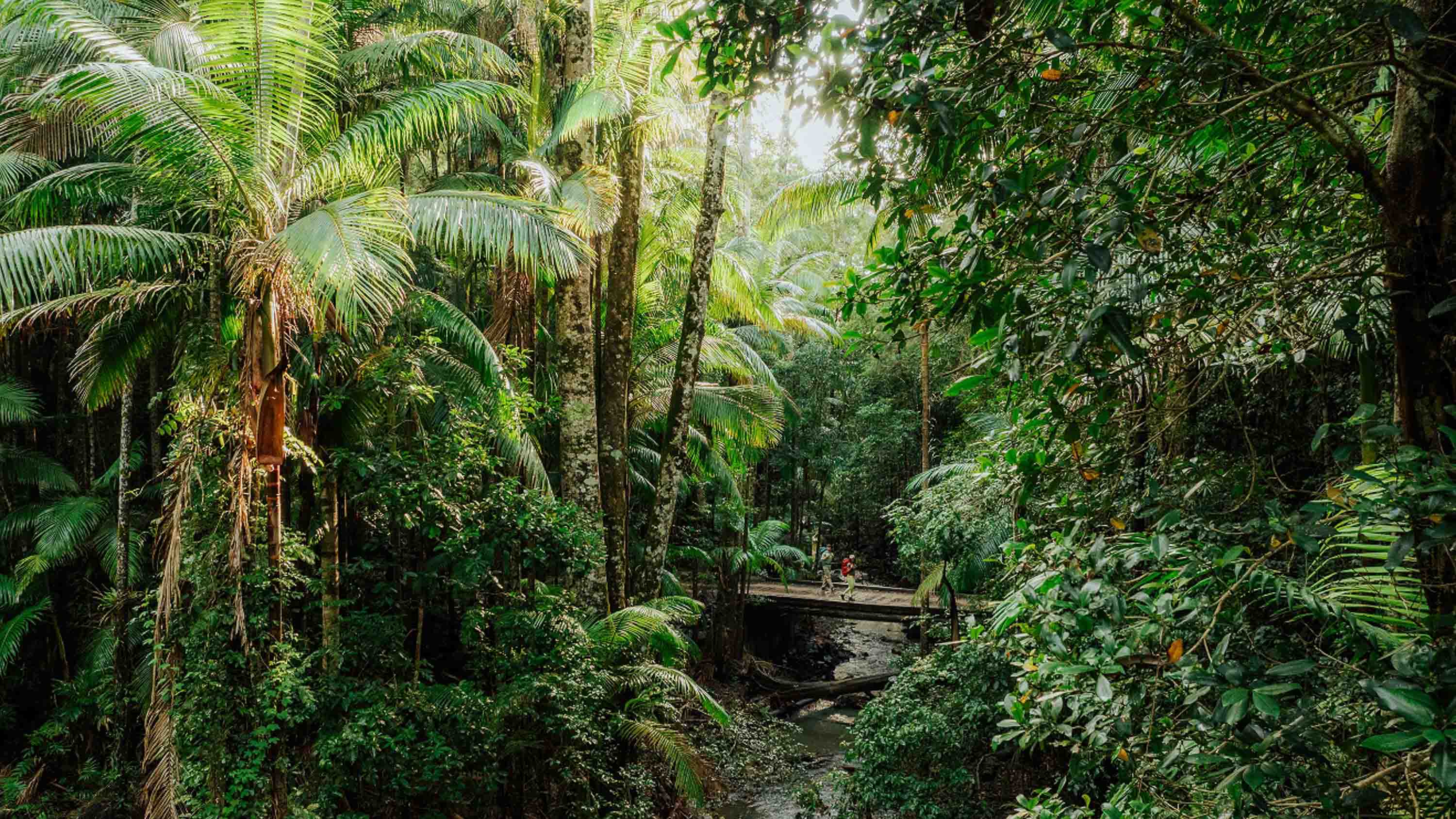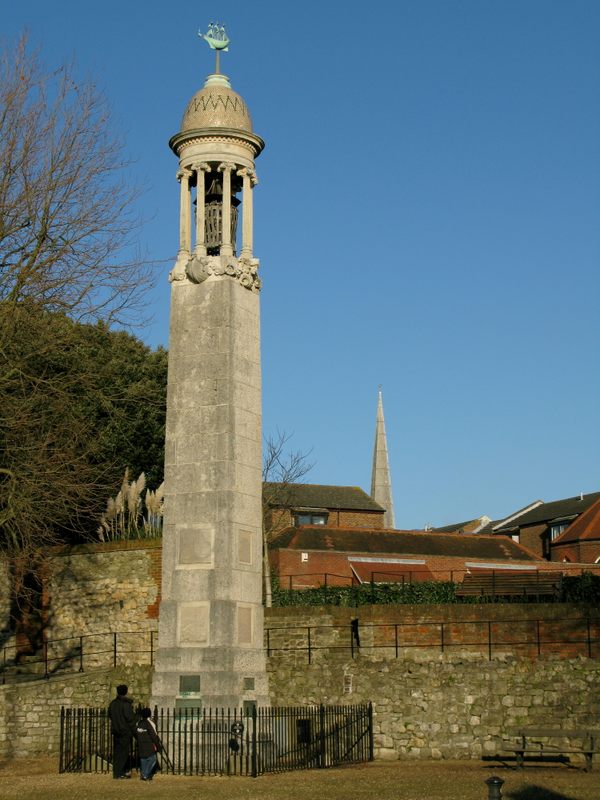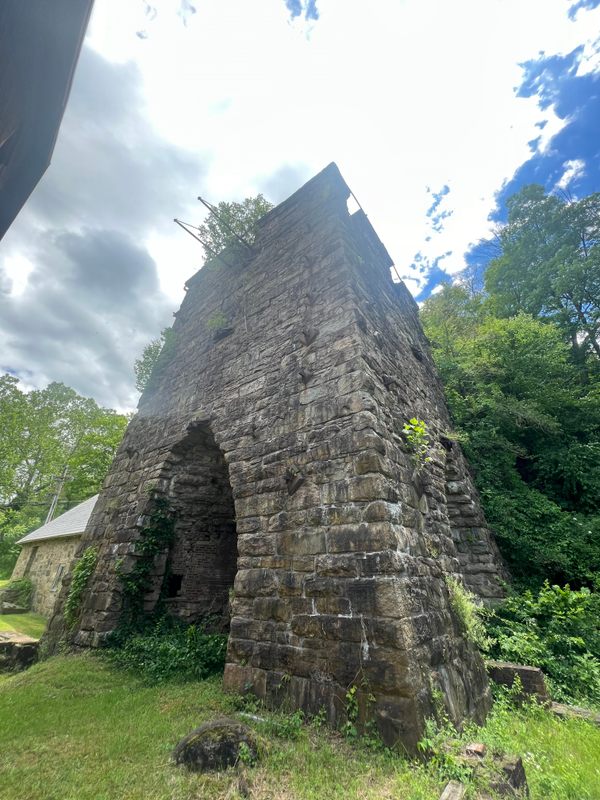Arizona’s Petrified Forest Is Changing What We Know About the Dawn of the Dinosaurs
Looking for fossils in Petrified Forest National Park can be a bit like gambling. When splitting rocks in the badlands of the Painted Desert of northern Arizona there’s often nothing inside. Occasionally, though, “you might win big and find something new to science,” says Adam Marsh, lead paleontologist at the park. Paleontologists have come up lucky recently, with the discovery of a number of new species in the area. These now-extinct amphibians, reptiles, and early mammal relatives provide a unique window into the biodiversity of the period in geologic history when the first dinosaurs appeared on the scene. The Petrified Forest is named for its magnificent plant fossils, in particular its hulking 200-million-year-old logs that have crystallized into shiny, colorful stone, but paleontologists now have a clearer picture of the animals that lived among the trees during the Triassic. This knowledge is thanks to dedicated efforts in the park, fortuitous finds, and the use of advanced technology. Discoveries of new fossil sites that preserve small-bodied animals in particular have upended our prior understanding of the area, says Ben Kligman, a postdoctoral fellow at the National Museum of Natural History in Washington, D.C., who does fieldwork in the park. “Maybe we were actually missing most of the diversity of all of the animals that were living in these ecosystems,” Kligman says. Petrified Forest, declared a national monument in 1906 and a national park in 1962, covers more than 220,000 acres in northeastern Arizona and contains exposures of a unit of rock called the Chinle Formation. The sediments that make up the Chinle were deposited between 228 and 208 million years ago, when Arizona was close to the equator. The environment at the time was much different than it is today, Marsh says, as it was a landscape of floodplains, ponds, and meandering rivers. Specimens of iconic Triassic early reptiles such as crocodile-like phytosaurs and armored aetosaurs are associated with the Petrified Forest. Some of the earliest dinosaurs, such as Chindesaurus bryansmalli and Coelophysis bauri, have been unearthed there too. Fossils of these animals and others found in the Chinle Formation are often found within layers of rock deemed the coprolite layers—beds identified by high concentrations of coprolites, or fossilized poop, Kligman says. These layers “had been looked at in quarries going back to the early 1900s, but what people were excavating from them were the large bones,” he says. The tinier bones around them were often ignored, or deemed to be fish scales. This coprolite layer is exposed at a locality called Thunderstorm Ridge, which has been key to new discoveries of small-bodied animals. Discovered about a decade ago, paleontologists noticed this site while prospecting rock outcrops on land that was added to the park in 2014. Kligman remembers seeing coprolites weathering out of a hill and swinging his pickaxe to get past the rock on the surface. The first chunk of fresh rock that he pulled out had a “four-inch-long jaw of a reptile sticking out of it,” he says. It ended up being a jaw of a new species of an herbivorous lizard-like reptile that has not been given a name yet, but it made clear that this would be an important fossil site. Now, Marsh says, they have around 7,500 specimens in the Petrified Forest collection just from Thunderstorm Ridge alone, although the fossils they are finding are so small this only takes up a small portion of a storage cabinet. It took 4,500 pounds of rock to produce this many specimens though, he adds. To find these fossils that are the size of a grain of rice, rock is hauled from the field site to the lab, screen washed with water to melt away the matrix, and carefully picked through. This painstaking work has led to recently described finds such as an early mammal relative called Kataigidodon venetus that was the size of a chipmunk, and a tiny lizard named Microzemiotes sonselaensis that has a grooves in its teeth—not dissimilar from a Gila monster—indicating it might have been venomous. “A lot of the discoveries we make are under the microscope, which are still very exciting discoveries,” Kligman says. One of his most memorable finds from Thunderstorm Ridge came when he and another paleontologist were picking through minute bone pieces in the lab and happened upon a jaw fragment with two parallel rows of teeth. A quick web search let them know this was definitely a caecilian, a limbless amphibian that resembles a snake. They called this new species Funcusvermis gilmorei, the genus meaning “funky worm” in Latin. This is “an incredible discovery, because they had no fossil record prior to the Jurassic Period,” Kligman says, making it the earliest example of this group that is still around today. These teeny-tiny fossils are often broken into a number of pieces, so the rock is washed in small amounts, increasing the chances all of the pieces of a jaw, for example,
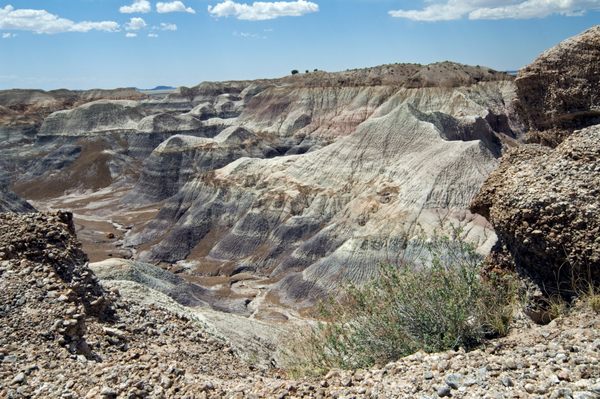
Looking for fossils in Petrified Forest National Park can be a bit like gambling. When splitting rocks in the badlands of the Painted Desert of northern Arizona there’s often nothing inside. Occasionally, though, “you might win big and find something new to science,” says Adam Marsh, lead paleontologist at the park.
Paleontologists have come up lucky recently, with the discovery of a number of new species in the area. These now-extinct amphibians, reptiles, and early mammal relatives provide a unique window into the biodiversity of the period in geologic history when the first dinosaurs appeared on the scene.
The Petrified Forest is named for its magnificent plant fossils, in particular its hulking 200-million-year-old logs that have crystallized into shiny, colorful stone, but paleontologists now have a clearer picture of the animals that lived among the trees during the Triassic. This knowledge is thanks to dedicated efforts in the park, fortuitous finds, and the use of advanced technology.
Discoveries of new fossil sites that preserve small-bodied animals in particular have upended our prior understanding of the area, says Ben Kligman, a postdoctoral fellow at the National Museum of Natural History in Washington, D.C., who does fieldwork in the park. “Maybe we were actually missing most of the diversity of all of the animals that were living in these ecosystems,” Kligman says.
Petrified Forest, declared a national monument in 1906 and a national park in 1962, covers more than 220,000 acres in northeastern Arizona and contains exposures of a unit of rock called the Chinle Formation. The sediments that make up the Chinle were deposited between 228 and 208 million years ago, when Arizona was close to the equator. The environment at the time was much different than it is today, Marsh says, as it was a landscape of floodplains, ponds, and meandering rivers.
Specimens of iconic Triassic early reptiles such as crocodile-like phytosaurs and armored aetosaurs are associated with the Petrified Forest. Some of the earliest dinosaurs, such as Chindesaurus bryansmalli and Coelophysis bauri, have been unearthed there too. Fossils of these animals and others found in the Chinle Formation are often found within layers of rock deemed the coprolite layers—beds identified by high concentrations of coprolites, or fossilized poop, Kligman says. These layers “had been looked at in quarries going back to the early 1900s, but what people were excavating from them were the large bones,” he says. The tinier bones around them were often ignored, or deemed to be fish scales.

This coprolite layer is exposed at a locality called Thunderstorm Ridge, which has been key to new discoveries of small-bodied animals. Discovered about a decade ago, paleontologists noticed this site while prospecting rock outcrops on land that was added to the park in 2014.
Kligman remembers seeing coprolites weathering out of a hill and swinging his pickaxe to get past the rock on the surface. The first chunk of fresh rock that he pulled out had a “four-inch-long jaw of a reptile sticking out of it,” he says. It ended up being a jaw of a new species of an herbivorous lizard-like reptile that has not been given a name yet, but it made clear that this would be an important fossil site.
Now, Marsh says, they have around 7,500 specimens in the Petrified Forest collection just from Thunderstorm Ridge alone, although the fossils they are finding are so small this only takes up a small portion of a storage cabinet. It took 4,500 pounds of rock to produce this many specimens though, he adds. To find these fossils that are the size of a grain of rice, rock is hauled from the field site to the lab, screen washed with water to melt away the matrix, and carefully picked through. This painstaking work has led to recently described finds such as an early mammal relative called Kataigidodon venetus that was the size of a chipmunk, and a tiny lizard named Microzemiotes sonselaensis that has a grooves in its teeth—not dissimilar from a Gila monster—indicating it might have been venomous.
“A lot of the discoveries we make are under the microscope, which are still very exciting discoveries,” Kligman says. One of his most memorable finds from Thunderstorm Ridge came when he and another paleontologist were picking through minute bone pieces in the lab and happened upon a jaw fragment with two parallel rows of teeth. A quick web search let them know this was definitely a caecilian, a limbless amphibian that resembles a snake. They called this new species Funcusvermis gilmorei, the genus meaning “funky worm” in Latin. This is “an incredible discovery, because they had no fossil record prior to the Jurassic Period,” Kligman says, making it the earliest example of this group that is still around today.
These teeny-tiny fossils are often broken into a number of pieces, so the rock is washed in small amounts, increasing the chances all of the pieces of a jaw, for example, can be found and reassembled. To get a better look at the specimens, Marsh says he occasionally drives them to Sandia National Labs in New Mexico to get detailed views of the bones using top-of-the-line computed tomography (CT) scanners. The researchers at Sandia love scanning the fossils, Marsh says, “because they get to learn about Triassic animals and anatomy, but they also get to learn about the capabilities of their own machines.”
Despite the focus on diminutive fossils, that doesn’t mean paleontologists are done looking at big-boned creatures, Marsh says. There are upwards of 500 known vertebrate fossil sites in the park, including bonebeds containing numerous specimens from a variety of species. Examining these bonebeds, says Larkin McCormack, a paleontological consultant who has done fieldwork in the park, can reveal surprising information about previously discovered species.
One in particular, Revueltosaurus, was first thought to be a type of dinosaur when it was discovered. Subsequent analysis of at least 12 specimens found in a bonebed revealed it was really a type of reptile related to modern crocodiles. “It’s kind of just an interesting example of people thinking one thing until we find out more, and then it changes, as often happens in science,” she says.
There are more publications to come in the near future, Marsh says, including surprising finds like a coprolite from a phytosaur that contains a small phytosaur jaw, raising questions about cannibalism in that group. There is a lot in the pipeline and even more still to be discovered at Petrified Forest, he adds. “Every time it rains, you have the chance that something in those 500 localities is eroding out.”
Plan your next adventure with our Explorer’s Guide to the National Parks, packed with overlooked wonders, expert tips, and all the best spots to visit.












































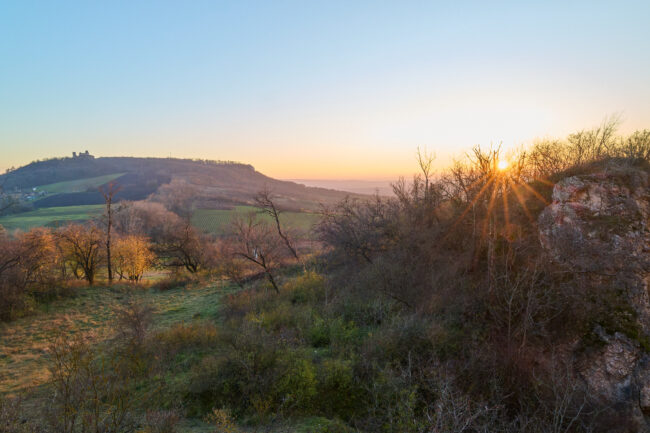


















.png?width=1920&height=1920&fit=bounds&quality=70&format=jpg&auto=webp#)



![FMPONE on Cache: "[Valve] reached out to buy it on day one of release"](https://img-cdn.hltv.org/gallerypicture/DX-MTDTw_gHqb41nUj4dJ0.png?auto=compress&ixlib=java-2.1.0&q=75&w=800&s=c037a2e76b287ac8a188f626faed337a#)









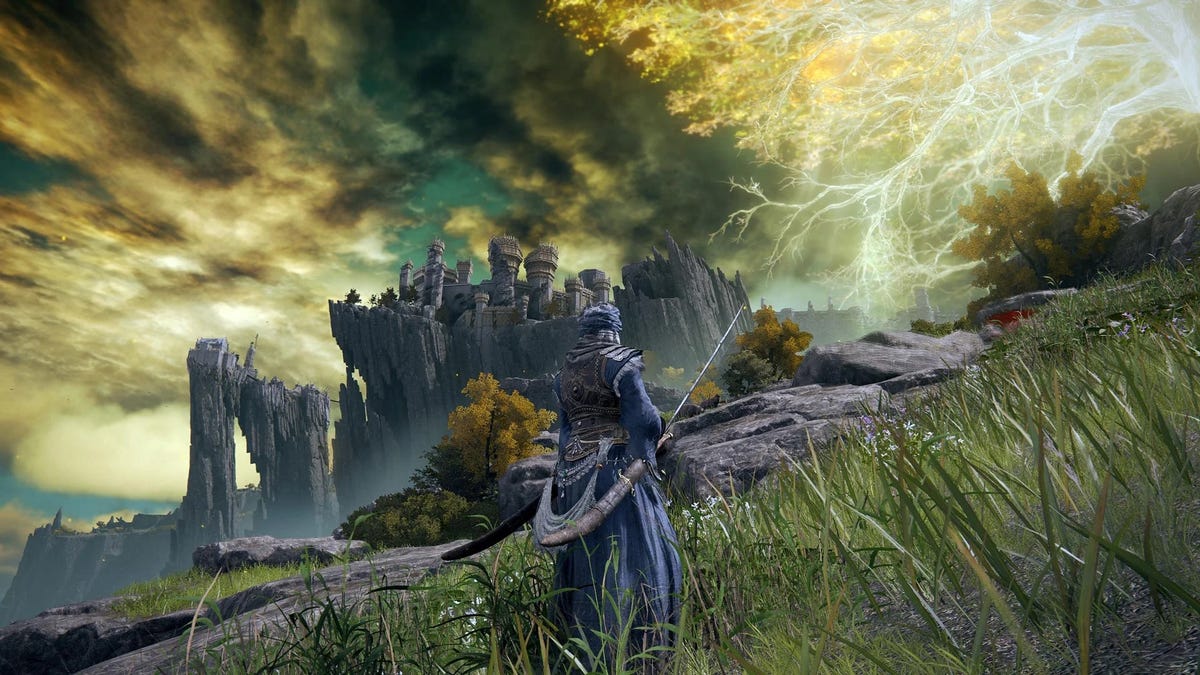








































































































.jpg)






































